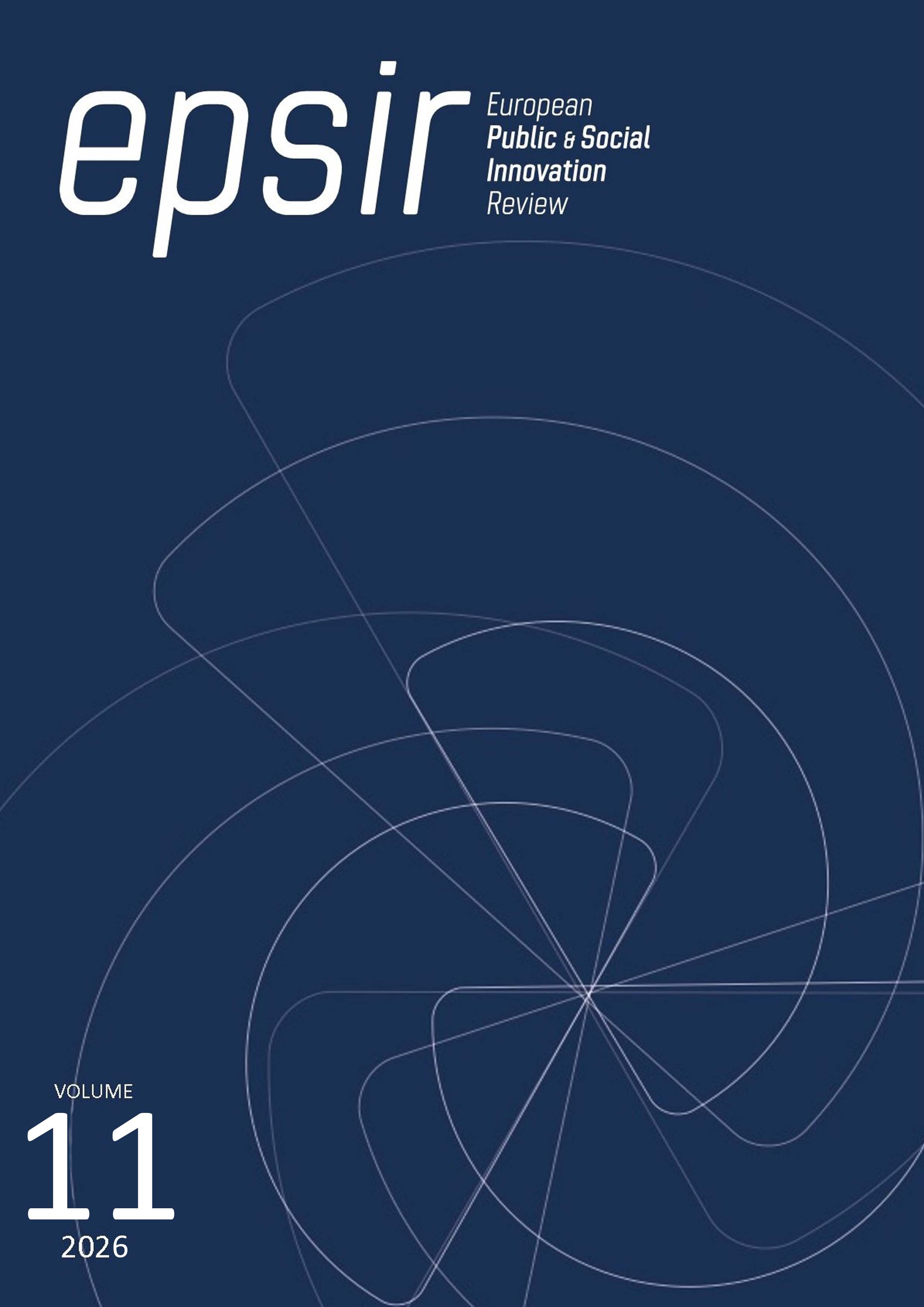Socioemotional competencies in children victims of the armed conflict
DOI:
https://doi.org/10.31637/epsir-2026-2088Keywords:
socioemotional competencies, armed conflict, interpersonal and intrapersonal relationships, childrenAbstract
Introduction: The research addresses socioemotional competencies in children victims of the armed conflict in Sincelejo, Sucre, highlighting the importance of these skills as protective factors in the face of trauma.. Methodology: A quantitative, descriptive, cross-sectional study was conducted with 50 purposively selected students. The BarOn ICE: NA Emotional Inventory was used to measure five dimensions: intrapersonal, interpersonal, adaptability, stress management and positive impression. Results: The results show that 50% presented deficient socioemotional competencies, and 50%, adequate to excellent levels. Intrapersonal skills (76% adequate) and stress management (74%) stood out, but showed deficiencies in interpersonal skills (48% insufficient) and adaptability (46% inadequate). Significant differences by sex and age were identified: girls excelled in intrapersonal competencies, and younger students (8-9 years) had better stress management. Conclusions: The urgency of implementing educational and support strategies to strengthen socioemotional competencies, focusing on the weakest areas, such as adaptability and social interaction, contributing to the recovery and integral development of child victims of the armed conflict, is underscored.
Downloads
References
Andrade Salazar, J. A., Angarita, L. F., Perico Restrepo, L., Henao, N. R. y Zuluaga, Y. E. (2011). Desplazamiento forzado y conflicto armado. Niños y niñas vulnerados en sus derechos humanos. Orbis. Revista científica Ciencias Humanas, 7(20) 51-78. http://doi.org/10.5281/zenodo.5112281
Betancourt, T. S., Borisova, I., Williams, T. P., Meyers‐Ohki, S. E., Rubin‐Smith, J. E., Annan, J., y Kohrt, B. A. (2013). Research Review: Psychosocial adjustment and mental health in former child soldiers–a systematic review of the literature and recommendations for future research. Journal of child psychology and psychiatry, 54(1), 17-36. https://doi.org/10.1111/j.1469-7610.2012.02620.x DOI: https://doi.org/10.1111/j.1469-7610.2012.02620.x
Bonanno, G. A., Westphal, M. y Mancini, A. D. (2011). Resilience to loss and potential trauma. Annual Review of Clinical Psychology, 3, 407-440.
https://doi.org/10.1146/annurev-clinpsy-032210-104526 DOI: https://doi.org/10.1146/annurev-clinpsy-032210-104526
Chaplin, T. M., y Aldao, A. (2013). Gender differences in emotion expression in children: A meta-analytic review. Psychological Bulletin, 139(4), 735-765. https://doi.org/10.1037/a0030737 DOI: https://doi.org/10.1037/a0030737
Compas, B. E., Jaser, S. S., Dunn, M. J. y Rodriguez, E. M. (2017). Coping with chronic illness in childhood and adolescence. Annual review of clinical psychology, 13, 455-480. https://doi.org/10.1146/annurev-clinpsy-032511-143108 DOI: https://doi.org/10.1146/annurev-clinpsy-032511-143108
Eccles, J. S. (1999). The development of children ages 6 to 14. The future of children, 9(2), 30-44. https://doi.org/10.2307/1602703 DOI: https://doi.org/10.2307/1602703
Hernández, C. y Mendivil, P. (2019). Competencias socioemocionales de los adolescentes víctimas del conflicto armado en Ovejas (Sucre - Colombia). En Apuestas del departamento de Sucre en Empresa, Sociedad y Estado (pp. 96-113). Corporación Universitaria Del Caribe Cecar. DOI: https://doi.org/10.21892/9789585547261.6
Lopes, P. N., Salovey, P. y Straus, R. (2004). Emotional intelligence, personality, and the perceived quality of social relationships. Personality and individual differences, 35(3),
641-658. https://doi.org/10.1016/S0191-8869(02)00242-8 DOI: https://doi.org/10.1016/S0191-8869(02)00242-8
López Novellón, L., Lira Rodríguez, E. M. y González-Mendiondo Carmona, L. (2018). Revisión sistemática de programas sobre educación emocional en educación infantil. En Libro de actas del I Congreso internacional de psicología de organizaciones saludables
(pp. 127-128). Prensas de la Universidad de Zaragoza.
Masten, A. S. y Narayan, A. J. (2012). Child development in the context of disaster, war, and terrorism: Pathways of risk and resilience. Annual review of psychology, 63, 227-257. https://doi.org/10.1146/annurev-psych-120710-100356 DOI: https://doi.org/10.1146/annurev-psych-120710-100356
Obando Cabezas, L., Salcedo Serna, M. A. y Correa, L. F. (2017). La atención psicosocial a personas víctimas del conflicto armado en contextos institucionales de salud pública. Psicogente, 20(38). https://doi.org/10.17081/psico.20.38.2559 DOI: https://doi.org/10.17081/psico.20.38.2559
Ugarriza Chávez, N. y Pajares Del Águila, L. (2005). La evaluación de la inteligencia emocional a través del inventario de BarOn ICE: NA, en una muestra de niños y adolescentes. Persona, 8, 11-58. DOI: https://doi.org/10.26439/persona2005.n008.893
Unidad para las Víctimas. (2023). Niños, niñas y adolescentes en el conflicto armado: Afectaciones más allá del reclutamiento. https://acortar.link/cmDcbe
Valencia-Suescún, M. I., Ramírez, M., Fajardo, M. A. y Ospina-Alvarado, M. C. (2015). De la afectación a nuevas posibilidades: niñas y niños en el conflicto armado colombiano. Revista latinoamericana de ciencias sociales, niñez y juventud, 13(2), 1037-1050. https://doi.org/10.11600/1692715x.13234251114 DOI: https://doi.org/10.11600/1692715x.13234251114
Viveros-Chavarría, E., Martínez, E., Peñaralda-Sacarpeta, S. y Baena, E. (2022). Atención a niños, niñas, adolescentes y sus familias víctimas del conflicto armado en Colombia. Revisión documental. Revista latinoamericana de ciencias sociales niñez y juventud, 20 (3),
1-29. https://dx.doi.org/10.11600/rlcsnj.20.3.5563 DOI: https://doi.org/10.11600/rlcsnj.20.3.5563
Downloads
Published
How to Cite
Issue
Section
License
Copyright (c) 2025 Rubiela Godin Díaz , Jorge Navarro-Obeid, César Argumedos de la Ossa , Esteban Pérez Vitola , Jonathan Aníbal Sierra

This work is licensed under a Creative Commons Attribution-NonCommercial-NoDerivatives 4.0 International License.
Authors who publish with this journal agree to the following terms:- Authors retain copyright and grant the journal right of first publication with the work simultaneously licensed under Creative Commons Non Commercial, No Derivatives Attribution 4.0. International (CC BY-NC-ND 4.0.), that allows others to share the work with an acknowledgement of the work's authorship and initial publication in this journal.
- Authors are able to enter into separate, additional contractual arrangements for the non-exclusive distribution of the journal's published version of the work (e.g., post it to an institutional repository or publish it in a book), with an acknowledgement of its initial publication in this journal.
- Authors are permitted and encouraged to post their work online (e.g., in institutional repositories or on their website) prior to and during the submission process, as it can lead to productive exchanges, as well as earlier and greater citation of published work (See The Effect of Open Access).



